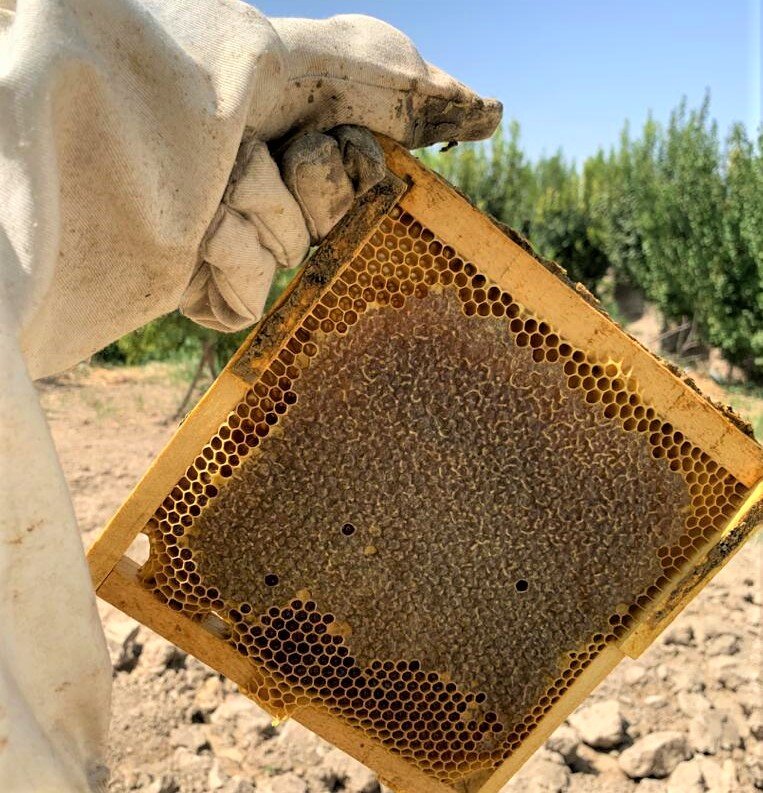Honey production rises 30% in Kordestan province

TEHRAN- Production of honey has risen 30 percent in Kordestan province, in the west of Iran, during the current Iranian calendar year (began on March 21, 2022), as compared to the previous year, according to a provincial official.
Referring to the census of apiaries in the province during October 8-20, 2022, Farzad Moaveni, the deputy head of the province’s Agriculture Department, informed about the favorable growth of honey production and the number of colonies in the apiaries of the province.
While referring to the number of colonies in Kordestan province, he added: “According to this census, there are 278,000 colonies in the province, of which 97 percent are modern and three percent are indigenous.”
Announcing that a total of 2,435 tons of honey was produced in the province this year, he said: “2,415 tons of it were related to modern colonies and 20 tons were related to native colonies.”
Pointing out that the average production of honey in the modern colonies of the province was 8.6 kilograms and in the native colonies was 2.9 kilograms, he reminded that there are 7,213 apiaries in the province, which shows an increase of 2.5 percent compared to the last year.
Saying that 257 kilograms of royal jelly was produced in Kordestan this year, the deputy head of the province’s Agriculture Department said: “One of the priority projects of the province is the development of beekeeping, which has been seriously pursued in the last few years.”
Back in late August 2022, the director of the Agriculture Ministry’s beekeeping development program said the country’s annual honey production is expected to reach 115,000 tons in the current Iranian calendar year 1401 (ends on March 20, 2023).
According to Touraj Saremi, the government has paid over 145 billion rials (over $500,000) of facilities to the country’s beekeepers since August 2021 when the government took office.
Saremi noted that Agriculture Ministry has defined a five-year development plan to reform the structure of the country's apiaries and increase the quantity and quality of honey production during the Iranian calendar year 1401 to 1405 (begins in March 2026).
“The implementation of this program requires the necessary support for providing inputs, implementing educational-training programs, and providing facilities to beekeepers. It is also required to provide apiaries with insurance coverage to reduce the risks and to ensure sustainable production,” he said.
The official noted that the ministry is also pursuing opening a credit line to be able to meet part of the needs of producers in this sector within the framework of rules and regulations.
As IRNA reported, Iranian beekeepers managed to produce 112,000 tons of honey in the previous Iranian calendar year.
Due to the high quality of Iranian honey, the product is exported to many countries including China, Bahrain, Kuwait, Qatar, Oman, Germany, the United Kingdom, Canada, Hong Kong, Australia, Indonesia, Malaysia, Iraq, and Lebanon.
Back in March 2020, the former director of the Agriculture Ministry’s beekeeping development plan had said the country's beekeeping industry was planned to become the leading agricultural sector in the country, the leading honey producer in the region, and a strong player in the world markets.
“Benefiting from up-to-date knowledge, and technology, the industry is going to provide reliable, high-quality products with greater value-added,” Farhad Moshir Qafari said.
Over the past five years, Iran’s beekeeping industry shifted its focus from producing only one main product, namely honey, to producing other bee secretions such as royal jelly and bee venom, Qafari said.
“Melittin is a very valuable bee venom extract that is currently imported, but the beekeeping industry has the potential to produce this substance inside,” he stressed.
MA/MA
